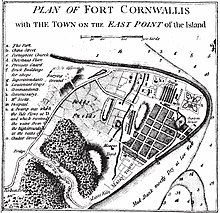Northam Road, George Town
In the olden days, the northern coast of George Town was simply known as the 'North Beach'. British administrators, including the founder of Penang, Francis Light, were buried within the Old Protestant Cemetery near the eastern end of Northam Road. The road gradually became the address of choice for the Europeans, and later, Chinese tycoons, who built elegant mansions along the road. As a result, Northam Road was also known as the Millionaire's Row by the locals.
Northam Road is also home to some of the tallest skyscrapers in Penang, many of which house commercial enterprises like banks, insurance firms, property and car dealers, and other businesses.
Naming


Northam Road was originally named after Northam, Devon, in southwest England. It was officially renamed as Jalan Sultan Ahmad Shah in the 1980s, in honour of the then King of Malaysia, Sultan Ahmad Shah, who visited Penang in 1982. Nonetheless, local Penangites continue to refer to the road by its colonial name, Northam Road. This is partly because the new name sounds unwieldy, but also reflects a strong conservatism among the locals, who view Penang's colonial history as part of their local identity.
History
During the early years of British rule, British officers and other Europeans were buried within the Old Protestant Cemetery. These included Captain Francis Light, who founded Penang in 1786 and died in 1794. At the time, Northam Road had yet to come into existence and the area was simply known as the 'North Beach'.
Throughout the 19th century, Northam Road evolved into the suburban area of choice for wealthy Europeans, who began building bungalows along the road. The Europeans later moved out of Northam Road for greener, leafy neighbourhoods further inland, leaving the bungalows along the road to be snapped up by Chinese businessmen, who in turn constructed more elegant bungalows along the road. Many of the wealthy Chinese who resided along Northam Road, such as Yeap Chor Ee, Loh Boon Siew and Lim Lean Teng, also chose European names for their residences, reflecting the upper-class preferences for all things European.
In 1980, Northam Court, a 16-storey luxurious condominium project under construction was demolished just before completion when it began tilting and was at risk of collapse. Since the 1990s, the completion of commercial skyscrapers along Northam Road has turned the coastal thoroughfare into a significant part of the city's Central Business District. The construction of these skyscrapers have been made possible as the road technically lies outside the city's UNESCO World Heritage Site.
Landmarks

- Old Protestant Cemetery
- Kedah House, the residence of the Sultan of Kedah
- Homestead, formerly the residence of Yeap Chor Ee and now part of Wawasan Open University
- Woodville
Skyscrapers
- Mansion One
- MBf Tower
- BHL Tower
- Boustead Tower
- EPF Tower
- Menara Northam
- Sri Perdana Condominium
See also
References
- ^ "Penang's new financial hub - Business News | The Star Online". www.thestar.com.my. Retrieved 2017-11-18.
- ^ "Millionaire's Row in Penang - Georgetown Attractions". penang.ws. Retrieved 2017-02-17.
- ^ Wai, Wong Chun. "Grand Old Man of Penang - Community | The Star Online". Retrieved 2017-02-17.
- ^ "The Northam Court saga".
- ^ Jenkins, Gwynn (2008). Contested Space: Cultural Heritage and Identity Reconstructions : Conservation Strategies within a Developing Asian City. ISBN 9783825813666.